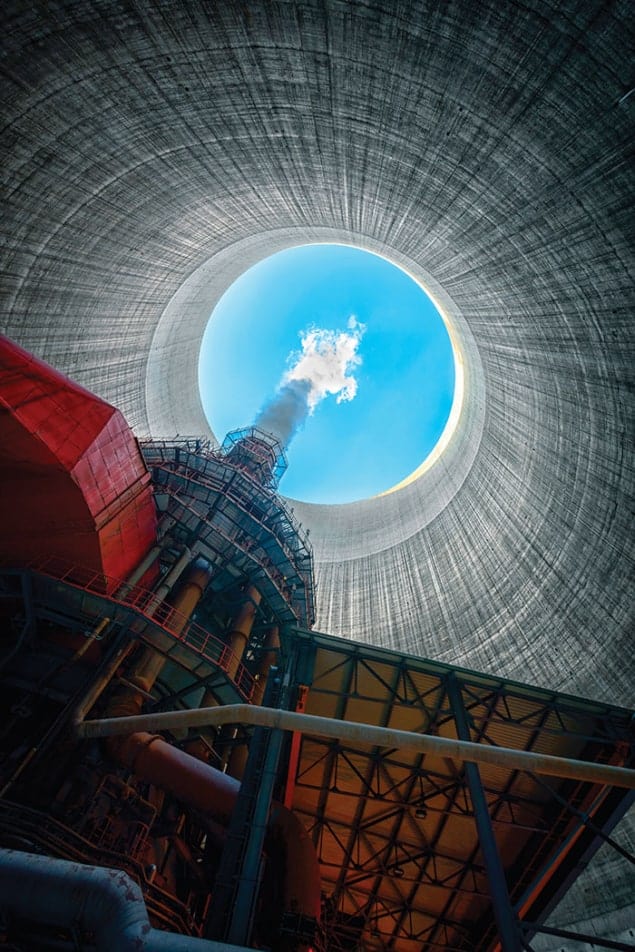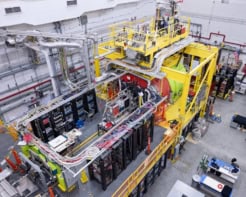Geoff Vaughan reviews The Fall and Rise of Nuclear Power in Britain: a History by Simon Taylor

As the First World War began, the British foreign secretary Sir Edward Grey reportedly declared “The lamps are going out all over Europe.” Judging by recent predictions of a gap between the UK’s supply of electricity and future demand, perhaps we should replace “Europe” with “Britain”. Nuclear power stations provide more than 20% of the UK’s electrical generation capacity, but most will close by the mid-2020s; only one new nuclear power station has been ordered since 1980; and plans to build more are still not finalized. The reasons for the ambivalent attitude to nuclear power are a combination of technology, politics and economics. In his book, The Fall and Rise of Nuclear Power in Britain, Simon Taylor – from the University of Cambridge’s Judge Business School – concentrates mainly on the latter.
Taylor begins by reviewing the period between 1945 and 2002, which he calls “the years of hope and disappointment”. During this period governments dithered and plans for future nuclear power stations grew and diminished. The claims of nuclear proponents – mainly scientists and engineers developing the plants – were highly optimistic, and cost estimations were confused by somewhat dubious accounting methods (for example, R&D costs were ignored). Indeed, government plans were initially determined more by the UK Atomic Energy Authority (UKAEA) than by the Central Electricity Generating Board, which was much more sceptical even though two of its heads were ex-UKAEA chairpersons. This should, perhaps, have been a warning sign.
The problems for the UK nuclear industry can be traced to the decision, after the Second World War, to develop air-cooled, graphite-moderated piles to produce plutonium for nuclear weapons. The UK had also been considering the possibility of nuclear-generated electricity, since politicians were told that coal was becoming scarce (after it was found to be more plentiful, the arguments moved from economics to security and diversity of supply). So, when the plutonium piles were found to be less efficient than hoped, the supposed coal shortage and the desire for nuclear weapons came together, leading to the birth of the Magnox reactor programme.
These CO2-cooled, graphite-moderated reactors used natural uranium fuel and operated successfully for decades: the last closed in December 2015. However, they were “developed” over the years, which, as Taylor notes, “reduced the chance of economies of scale”, as different designs were built by different consortia on different sites. Most of them overran both in time and cost. Following on were the advanced gas-cooled reactors (AGR), which were CO2-cooled, graphite-moderated but used enriched fuel and are the main type in use in the UK today.
A major problem was that the UK chose not to pursue what was, by the 1970s, rapidly becoming the global design choice: the light-water reactor (LWR). This US-developed design uses low-enriched fuel and either pressurized water or boiling water as both coolant and moderator, and US economic power meant the UK’s gas-cooled designs lost out in global competition. The last AGRs were ordered in the late 1970s, and by then the UK’s nuclear industry was already beginning to look very fragile: even in 1965 there were warnings that AGRs were not the economic choice.
As Taylor shows in the book, these problems came to a head in the 1980s, when the Conservative government privatized the electricity generation industry, exposing the nuclear sector’s financial and operational weaknesses. Only one new nuclear power station, the pressurized-water reactor at Sizewell B (Britain did, at last, catch up with global thinking on design), was planned and built in this period; it was supposed to have been the first of 10. Several attempts to privatize nuclear power stations ended with the government retaining responsibility for the Magnox reactors and, later, rescuing the privatized British Energy, which operated the AGRs. Also, in the early 1990s, the price of coal was artificially increased to protect its industry, meaning “nuclear had to bear the cost”. The extent of coal’s influence on nuclear power, in terms of availability, political influence, economics and now carbon emissions, is an intriguing theme running through the book.
The Labour governments that followed from the late-1990s were initially rather circumspect about nuclear power, partly due to ministers who saw it as a threat to Labour’s traditional coal industry base. However, by 2005 increasing pressure to reduce greenhouse gases and fossil fuel use produced a change of heart. A series of policy decisions (including, significantly, the Climate Change Act of 2008, which required a steady decrease in carbon emissions) led to the next stage: new nuclear power.
Taylor concentrates on the economic and political activities from 2002 through to 2015, when his book was completed. During this period the path for new nuclear power stations was eased somewhat via changes to planning controls and siting decisions. A system for private companies to submit designs to regulatory bodies before offering them to the operators was also introduced, reducing commercial risks. These designs were of foreign origin, though, because in this period the UK ceded control of its nuclear power industry to other countries. In particular, British Energy was sold to EDF, which is about 85% owned by the French government.
Although the government’s mantra has long been “no subsidies”, events such as the 2008 financial crash and the meltdown at Japan’s Fukushima Daiichi reactor made this impractical. To date, EDF’s plan to construct European pressurized-water reactors (EPRs – the only new design with UK regulatory approval) has received several government financial guarantees, including a guaranteed price for electricity for 35 years; government debt guarantees on construction loans; and indemnity against future policy changes. These are subsidies by other names, and required EU approval; their costs will be borne by consumers. Even with such support, EDF’s project still needed additional financing from Chinese partners. As part of the deal, these companies will receive assistance in getting regulatory approval for a Chinese-designed LWR. Similar guarantees will, no doubt, be expected by the two other potential operators, HORIZON and NuGen, which are also foreign owned and considering different designs, respectively a Japanese boiling-water reactor and a US pressurized-water reactor, assuming regulatory approval is granted.
Given all these difficulties, it is natural to consider whether alternative power sources could take nuclear’s place. But while Taylor expresses some doubts about the costs of nuclear power stations, dubbing EDF’s EPR “the world’s most expensive power station”, he finds the alternatives wanting.
His closing comment that “reliable sources of low-carbon power…[are needed]…that avoid dependence on foreign gas and which offer heat and light on a cold, still winter’s night” is worth repeating. Nuclear power is the only proven, low-carbon technology that can do this, but it needs government help. Since the book was written, new threats to EDF’s plans have surfaced. EDF and the French government seem supportive – albeit with a few dissenters, including EDF’s financial director, who resigned in March because he believed the project could jeopardize the company’s future. However, the final decision to build has still not been made and it will not occur until September at the earliest after a consultation with the French unions. All three potential new-build operators are targeting the mid-2020s for first operation.
Taylor’s book is an excellent summary of the technological, economic and political tribulations of nuclear power in the UK up to 2015. If I have one quibble it’s in the title: “fall and rise” hardly does justice to the rollercoaster ride that has been the history of nuclear power in the UK.
- 2016 UIT Cambridge £19.99pb 256pp



